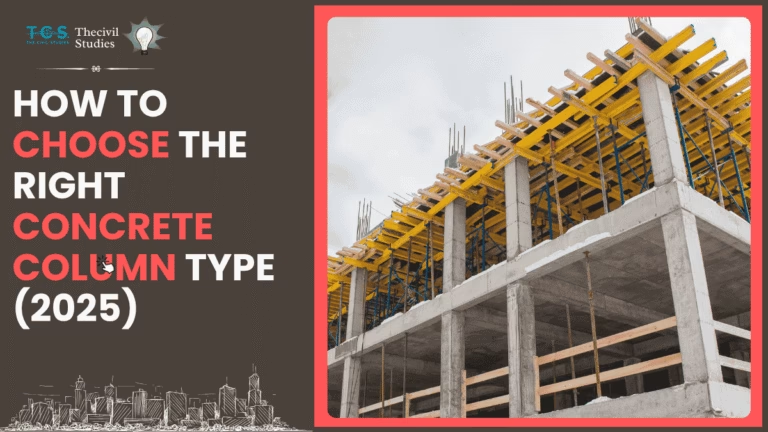
How does the support type influence the bending moment in beams
In structural engineering, one of the most essential factors influencing how a beam behaves under load is the type of support it rests on. While the load applied to a beam is a direct and visible force, it is the support condition that determines how this load is resisted, distributed, and how internal forces like bending moments develop within the beam.
What Is a Bending Moment?
A bending moment (BM) is the internal force (IF) within a beam that resists bending caused by external loads. e.g. Imagine trying to bend a wooden ruler—your hands apply a force that tries to bend it, and the ruler resists with an internal force. That internal resistance is the bending moment.

In simple terms:
Bending Moment (M) = Force (F) × Distance (x)
Where:
- M is the bending moment
- F is the applied force
- x is the distance from the point of interest
The farther a force is from a support, the higher the bending moment at that point.
Why Do Support Types Matter?
Every type of support either restrains or allows movement. The level of restriction directly impacts how the beam will bend. For example:
- A fixed support prevents both rotation and movement, leading to higher bending moments at the support.
- A pinned or roller support allows rotation, which means the bending moment at that point is zero.
In essence, support conditions control how bending moments are distributed along the length of the beam.
Different Support Types and Their Effect on Bending Moments
1. Simply Supported Beam:
Supported by a pin at one end and a roller at the other. Both supports allow rotation but restrict vertical movement.
Moment Behavior:
- Zero bending moment at both supports
- Maximum positive bending moment at midspan
- Moment diagram is parabolic under uniform loads
It used in residential and commercial floor systems
Equation (Uniform load w over span L)
M(max) = wL² / 8

2. Fixed Beam
Both ends of the beam are fixed, preventing movement and rotation.
Moment Behavior:
- Negative bending moments at both supports
- Reduced positive moment at the midspan compared to simply supported beams
- Combined moment diagram with both negative and positive regions
It used in Bridge decks, rigid frames, balconies with fixed ends
Equations (Uniform load w):
- Moment at supports: M = wL² / 12
- Moment at midspan: M = wL² / 24
Note: Fixed beams can reduce peak midspan moments but are more complex to construct.
3. Cantilever Beam:
Fixed at one end and free at the other.
Moment Behavior:
- Maximum negative bending moment at the fixed support
- Linearly decreasing moment towards the free end
- Entire beam is under negative moment
It used overhanging balconies, signage arms, traffic lights
Equation (Uniform load w):
M(max) = wL² / 2
Note: Cantilever beams offer unique design flexibility but require robust fixed supports.
4. Continuous Beam
A beam supported over more than two points or spans.
Moment Behavior:
- Negative bending moments develop over intermediate supports
- Positive bending moments occur in span regions
Load is shared across supports, reducing overall peak moments
It used in Multi-span bridges, long corridor beams
Analysis Methods:
- Moment distribution method
- Slope-deflection method
- Finite Element Method (FEM)
5. Overhanging Beam
A beam that extends beyond one or both supports.
Moment Behavior:
- Combination of cantilever and simply supported behavior
- Negative moments at overhanging support
- Positive moments in the main span
It used in Loading docks, projecting roof elements
Note: Overhanging sections increase complexity in design and must be carefully analyzed.
Comparative Summary
| Support Type | Moment Characteristics | Maximum Moment Location |
| Simply Supported | Zero at supports, max at midspan | Center of beam |
| Fixed | Negative at supports, reduced midspan moment | Ends and center |
| Cantilever | Max negative at fixed end, zero at free end | At fixed support |
| Continuous | Alternating positive and negative moments | Supports and spans |
| Overhanging | Mixed behavior, negative near overhang | At support and overhang ends |
Engineering Comparison: Fixed vs Simply Supported Beam
Consider a beam of span L under a uniform load w:
Simply Supported Beam:
- Max moment at center: M = wL² / 8
Fixed Beam:
- Moment at supports: M = wL² / 12
- Moment at center: M = wL² / 24
Observation
A fixed beam reduces the center bending moment by up to 67 percent compared to a simply supported beam. However, this comes with added cost and construction complexity. click here to know more
Additional Factors Influencing Bending Moments
Apart from support types, other factors that affect bending moments include:
- Load types (point load, distributed load, dynamic load)
- Span length (longer spans generate higher moments)
- Beam material and cross-section (affects moment capacity)
- Continuity and structural redundancy (affects load sharing)




